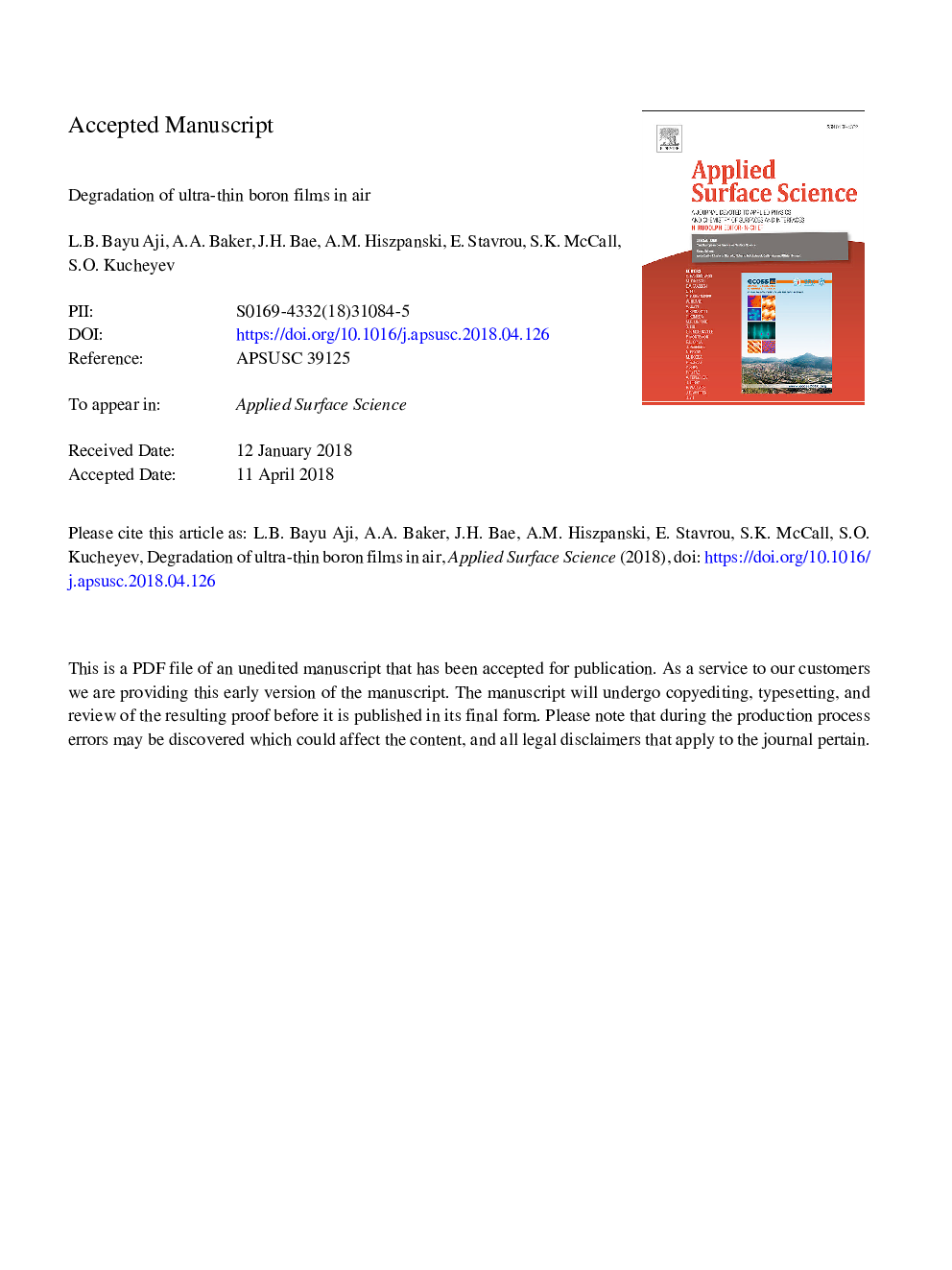| Article ID | Journal | Published Year | Pages | File Type |
|---|---|---|---|---|
| 7833863 | Applied Surface Science | 2018 | 15 Pages |
Abstract
Corrosion of B films in air can limit their practical applications. Here, we study the evolution of the elemental composition, thickness, and morphology of 10-100-nm-thick amorphous B films sputter-deposited onto glassy carbon substrates and stored under different conditions. Results show that films with thicknesses of â³55â¯nm have expected excellent corrosion resistance during storage in laboratory air at room temperature over several months. In contrast, â²45-nm-thick films exhibit pronounced degradation upon air exposure, starting with a change in the composition to â¼30 and â¼50â¯at.% of O and H, respectively. After such an O and H uptake, the degradation proceeds via mass loss with a characteristic time constant of â¼5â¯days in air at room temperature. A post-deposition annealing at 1000â¯Â°C in an inert atmosphere makes all the films corrosion resistant.
Related Topics
Physical Sciences and Engineering
Chemistry
Physical and Theoretical Chemistry
Authors
L.B. Bayu Aji, A.A. Baker, J.H. Bae, A.M. Hiszpanski, E. Stavrou, S.K. McCall, S.O. Kucheyev,
